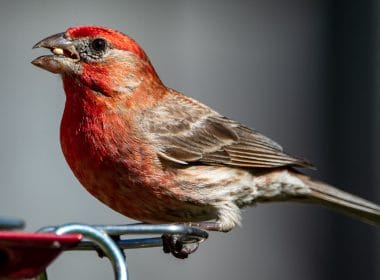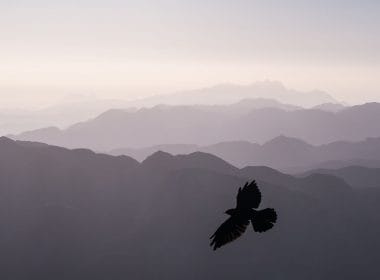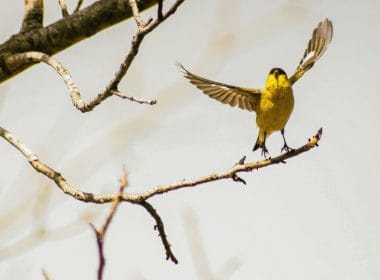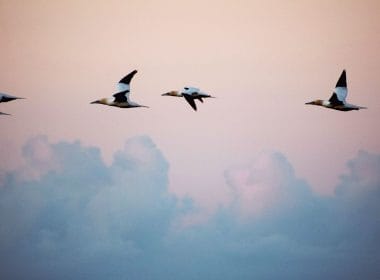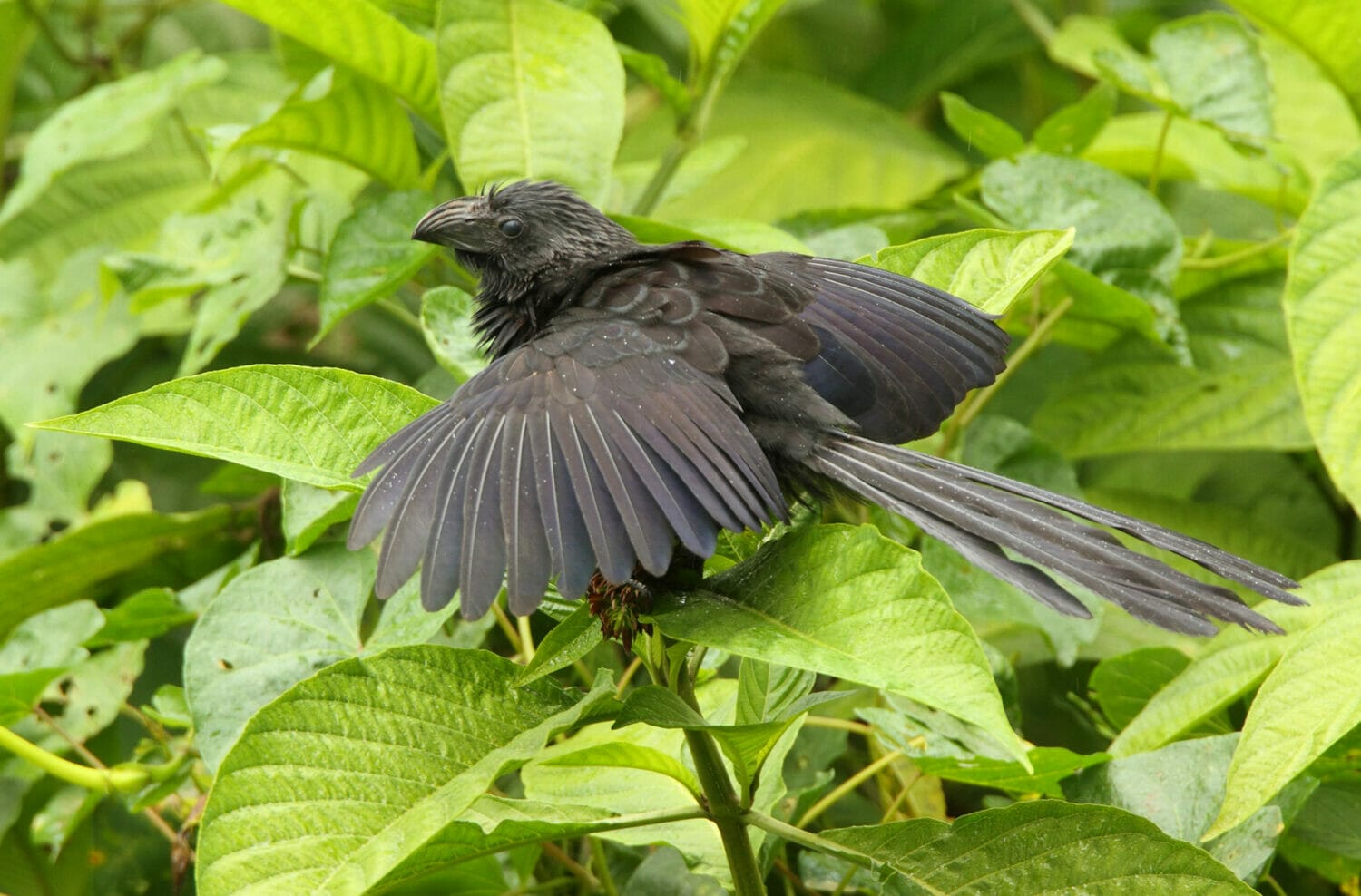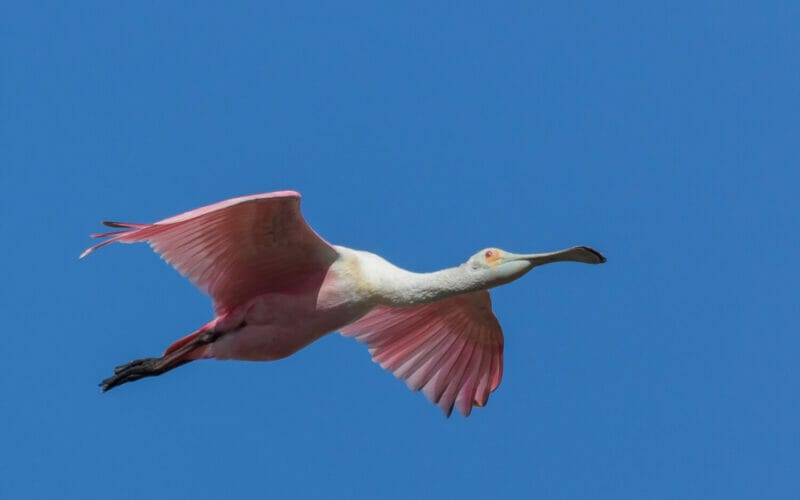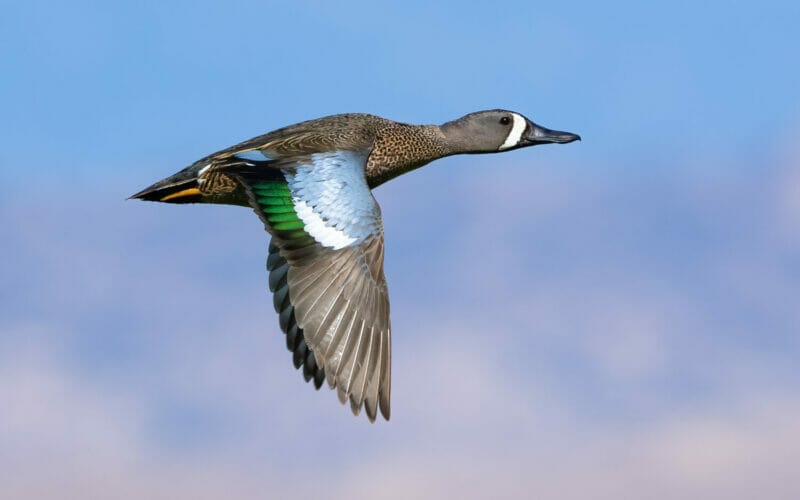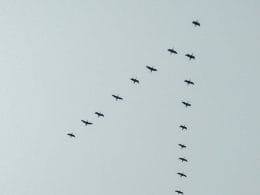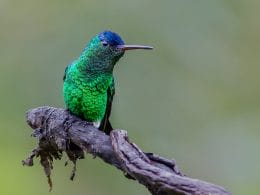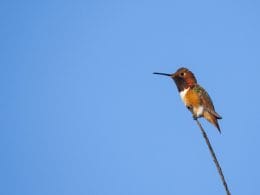In this post we investigate what black birds are in Mexico. With a varied environment and large land mass, as well as 2 ocean coasts, Mexico has a lot to offer birds with many North American species overwintering. We have tried to find endemics, visitors, forest and sea birds to include on our list
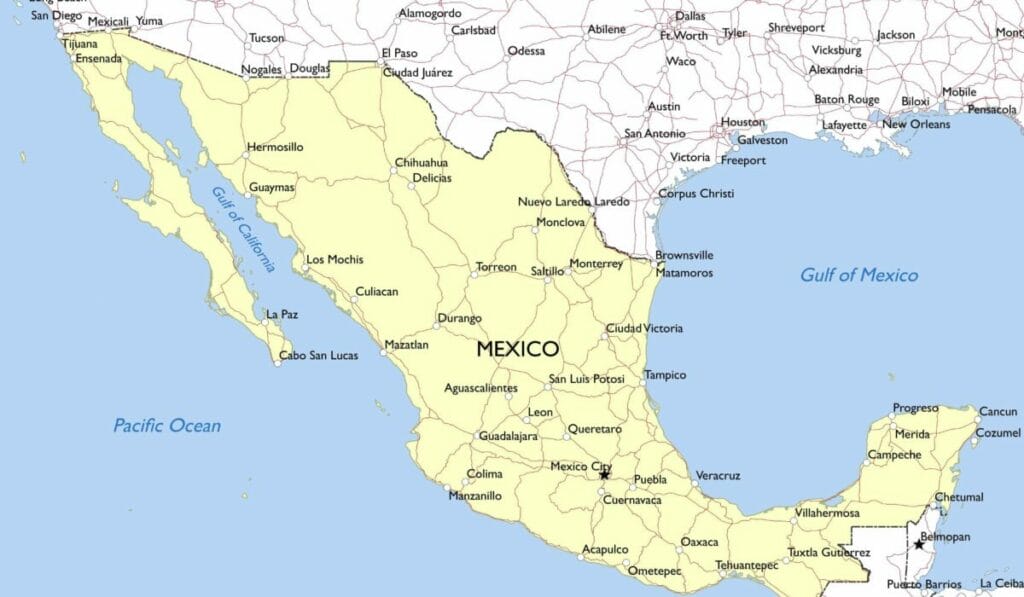
Mexico
It is difficult to succintly describe the climate and geography of a huge country like Mexico. Moving from the west coast the climate changes from dry to wetter in the mountains and moving south. The tropical southernmost areas are wettest and the rainiest months are during summer. The deserts of the central north are the driest areas.
The birds of Mexico
Mexico is 12th out of 253 sub-regions on eBird with a species count of 1,116. This reflects the large size of the country as well as the diverse geography and climate. The Mexican Eagle (or Crested Caracara) is the national bird of Mexico. However, it is the Golden Eagle that appears on the country’s flag. The Resplendent Quetzal is largely considered the most beautiful inhabitant. Searching for the best places to see birds in Mexico will present you with a long list – there are just that many and so many birds to see. Here are our best 10 black birds in Mexico
Ten of the best
Black Phoebe (Sayornis nigricans)
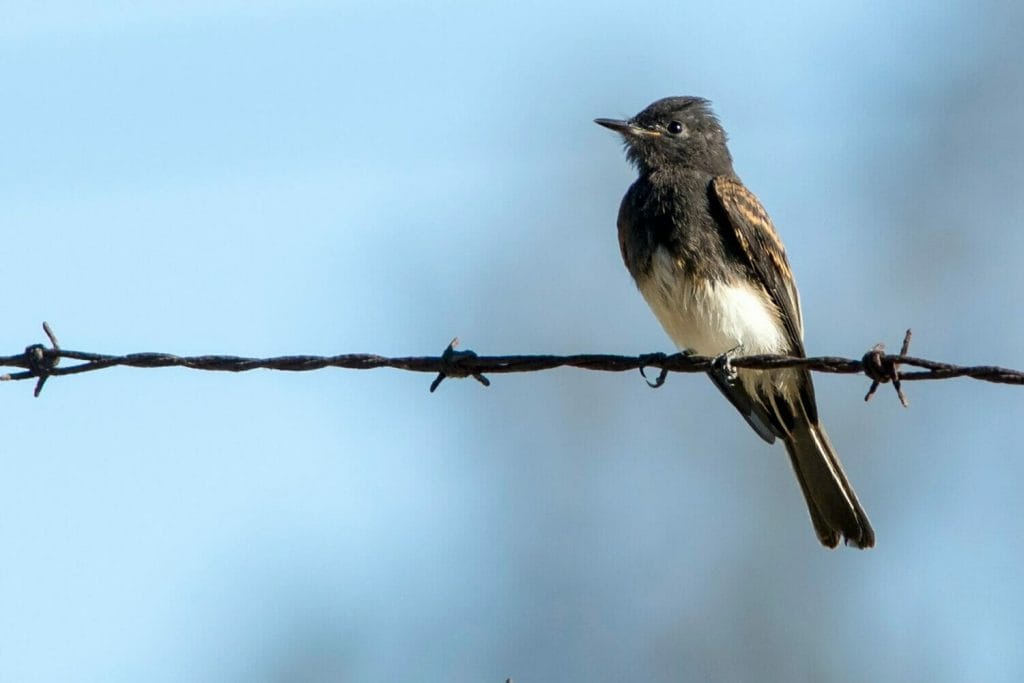
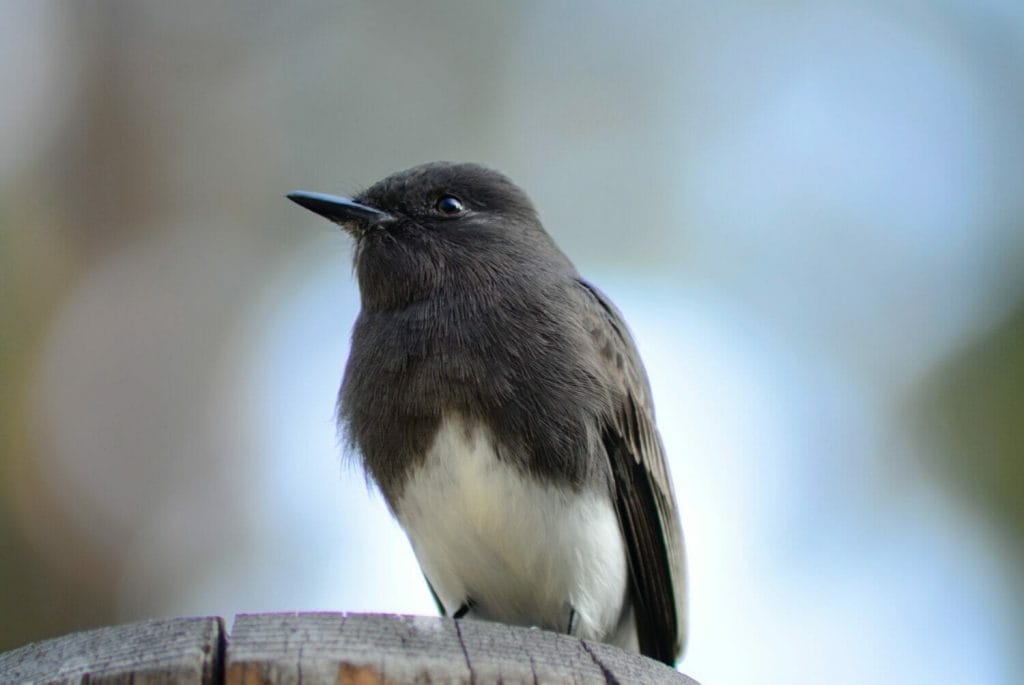
Identification and Size
The Black Phoebe is a gray/black flycatcher with a very bright, white belly. It has white stripes running down the wings.
Length: 6.3 inches
Weight: 0.63 ounces
Distribution

The Black Phoebe is a common resident of Mexico and has adapted to most environments. It can be seen all year round.

Call
Diet
The Black Phoebe is a flycatcher and as such feeds on flying insects. It can adapt when necessary to eat other insects and evens fruits.
Interesting Fact
The male phoebe conducts an elaborate courting ritual by giving the female a tour of nest sites. It hovers in front of each and the female chooses the best one.
Blue-black Grassquit (Volatinia jacarina)
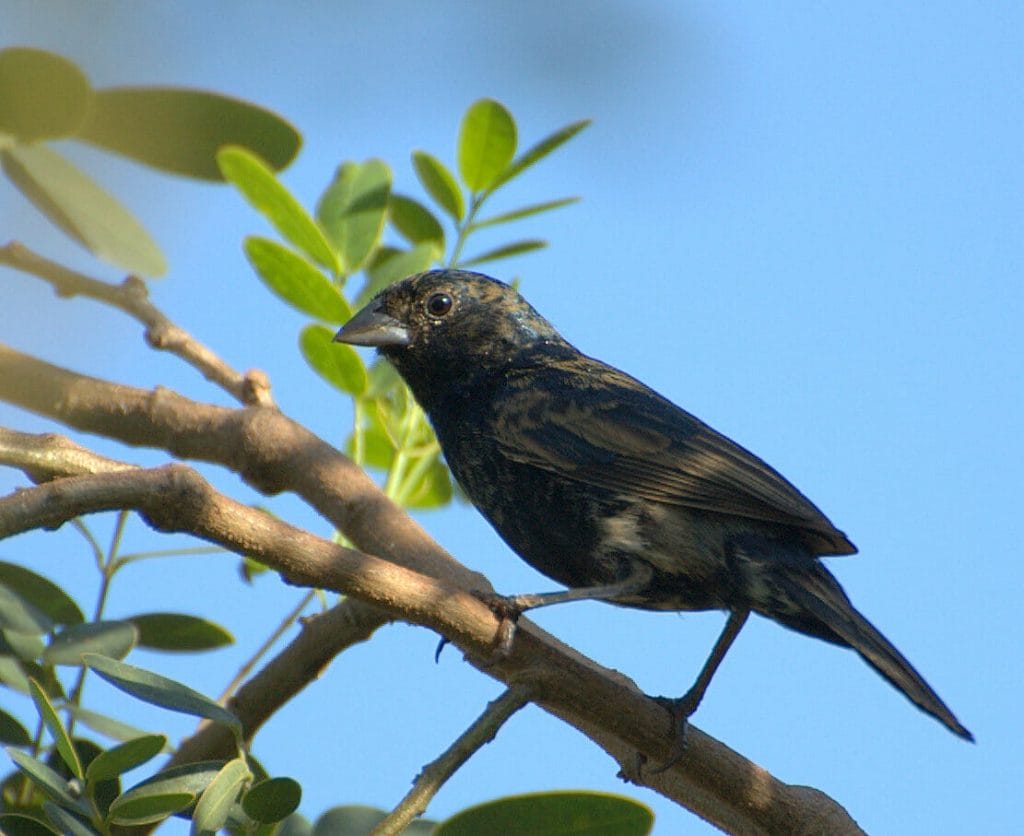
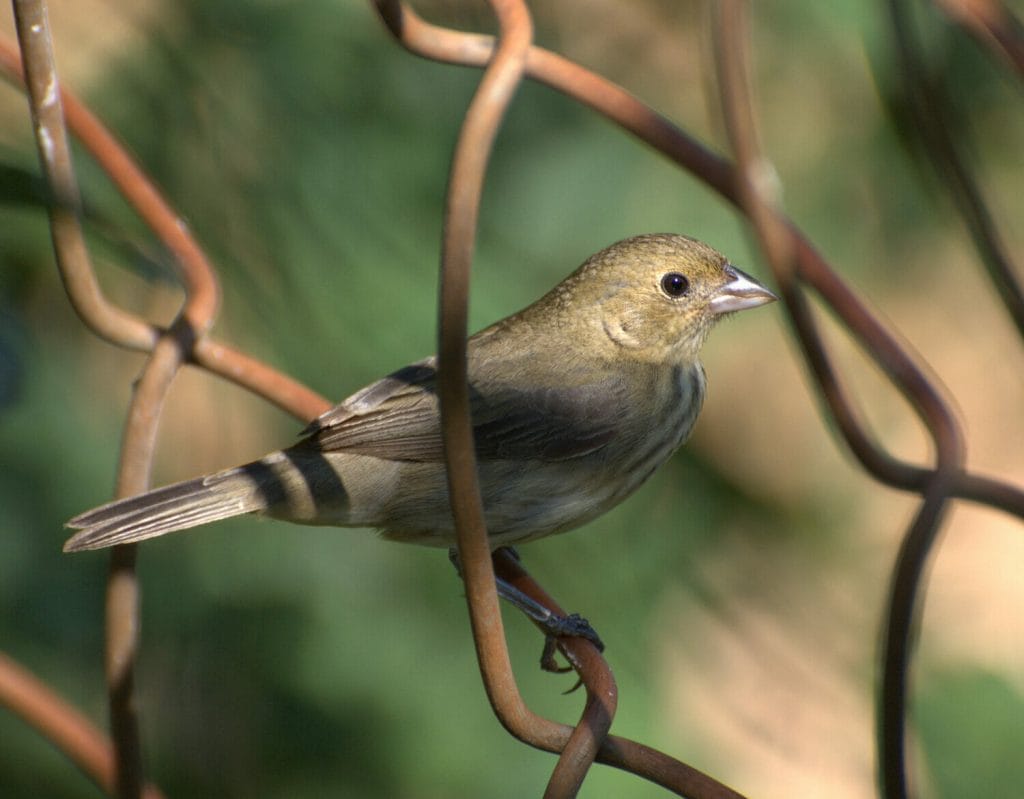
Identification and Size
The male is entirely black with a blue sheen during the summer breeding period. Both the male and female are mid-brown with streaks down the breast in non-breeding times. Both have a thick, rather pointed bill.
Length: 0.39 – 4.29 inches
Weight: 0.28 – 0.42 ounces
Distribution
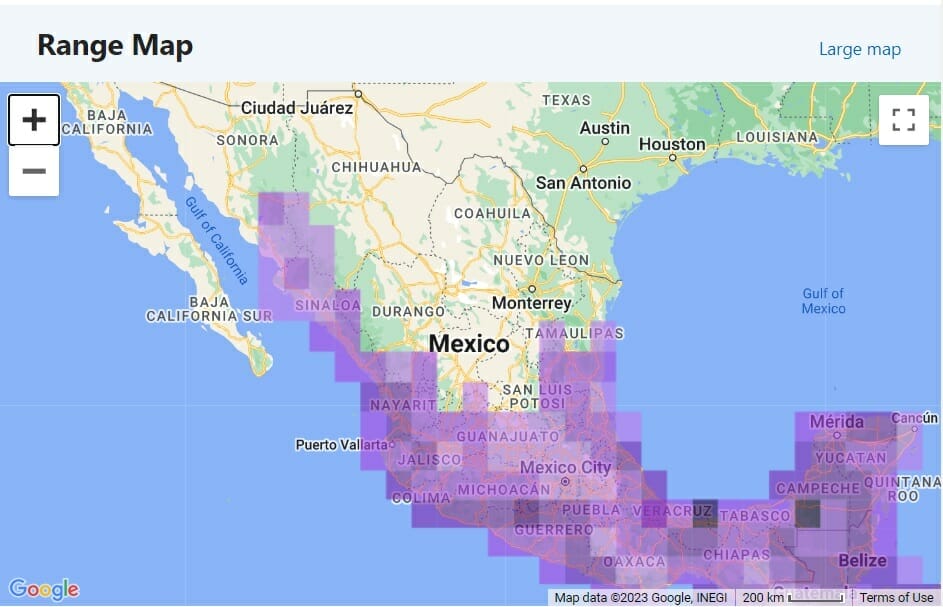
The Blue-black Grassquit can be seen throughout the year, with an increase in numbers during the summer months. It is distributed through the south and west of Mexico.

Call
Diet
The Blue-black Grassquit feeds mainly on grass seeds. Occassionally it will eat insects and berries.
Interesting Fact
The male bird is an enthusiastic singing. He perches on grass stems or posts and he throws himself into the air as he calls.
Black-throated Sparrow (Amphispiza bilineata)
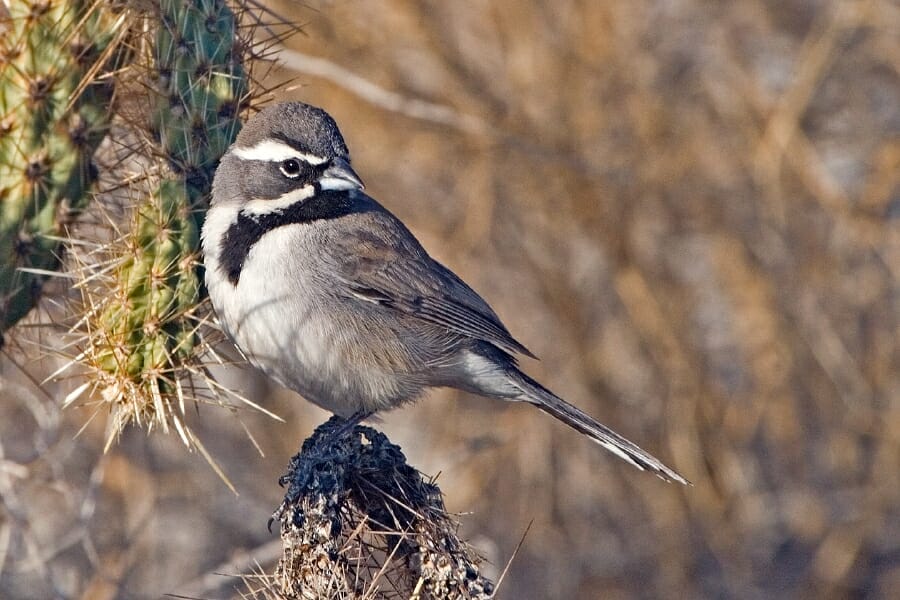
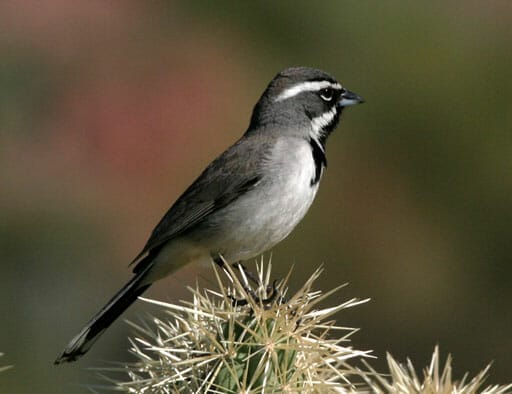
Identification and Size
This is a very attractive sparrow that is largely gray/brown. A deeply black throat extends into the face where it is contrasted with a white eyebrow and moustache.
Length: 4.72 – 5.51 inches
Weight: 0.48 ounces
Distribution
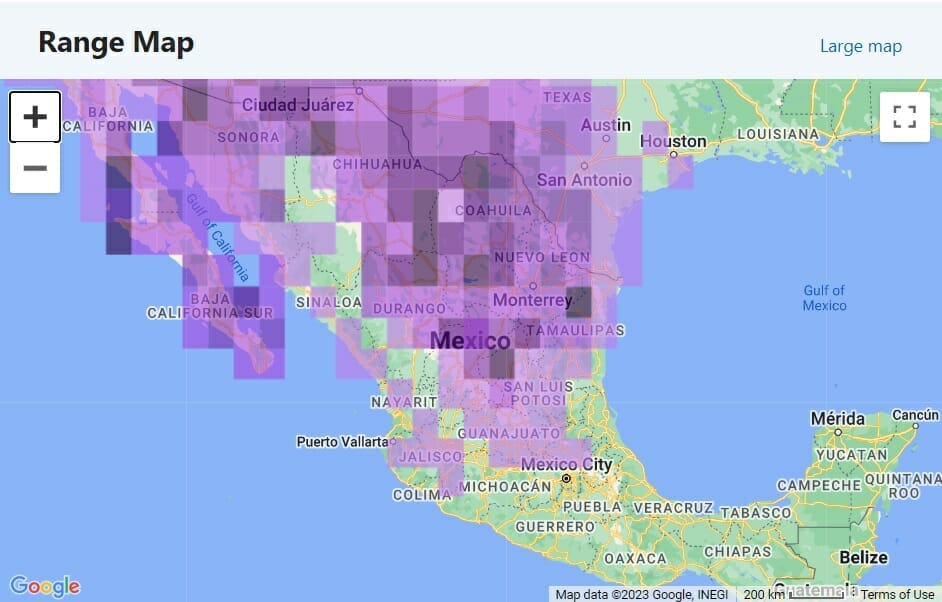
Mexico is the southernmost place that the Black-throated Sparrow are found, preferring the central plateau where they are resident.

Call
Diet
During non-breeding periods the Black-throated Sparrow will eat mainly grains, grazing for seeds and grasses on the ground. During the breeding season it become omnivorous, eating grasshoppers, butterflies etc.
Interesting Fact
This sparrow is recorded as having a complex and attractive call. Its calls differ depending on the current behavior.
Melodious Blackbird (Dives dives)
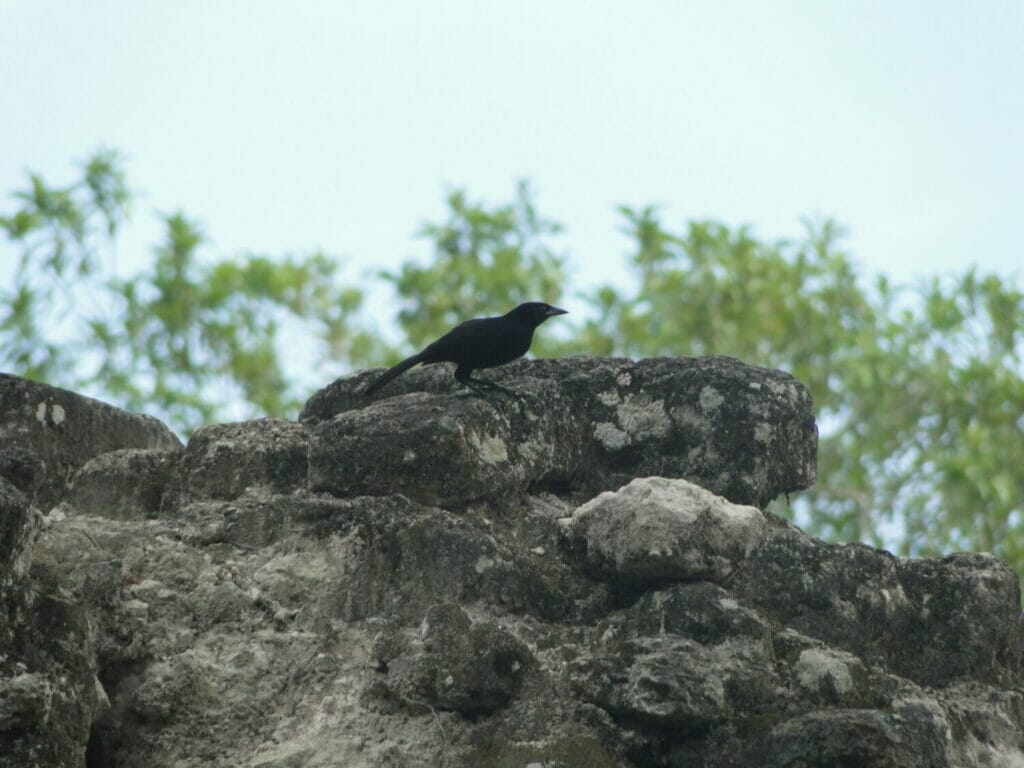
Identification and Size
Both sexes are jet black with a long, pointed bill. They have longish legs.
Length: 9.05 – 10.03 inches
Weight: 2.94 – 3.38 ounces
Distribution
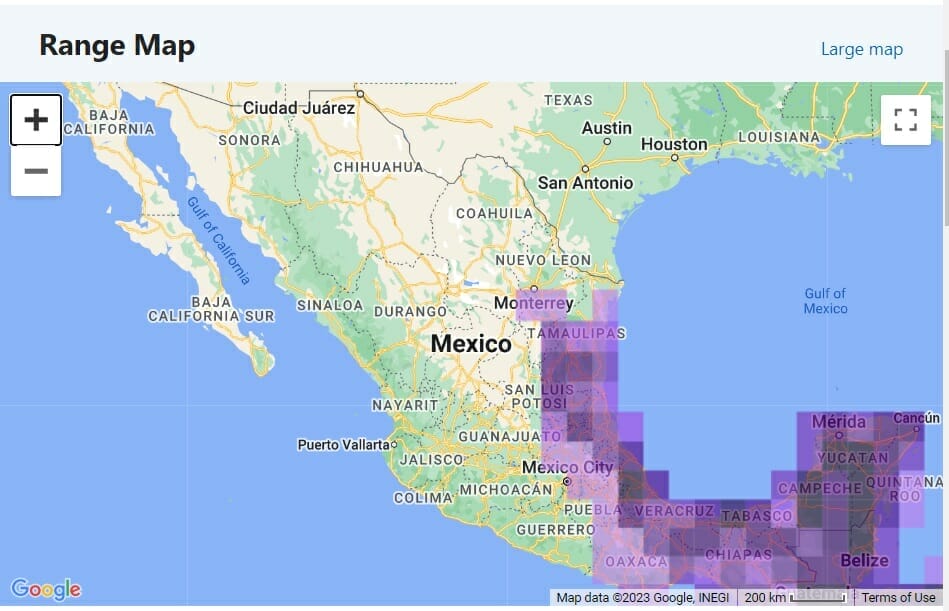
The Melodious Blackbird is spread across the northeast of Mexico, along the Gulf of Mexico coast and into the southern Central America.

Call
Diet
The Melodious Blackbird is omnivorous, eating everything from insects to nectar, fruits and seeds.
Interesting Fact
This blackbird has been rather successful with no known threats. Its range has extended and it appears to be adaptable to different environments.
Black-backed Oriole (Icterus abeillei)
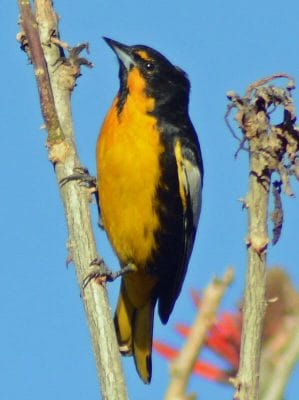
Identification and Size
The male bird is distinctive with a yellow/orange breast and belly. The black back is complemented by large white panels on the wings. The female is duller with a brown back and washed out front.
Length: 7.8 – 8.0 inches
Weight: 1.0 – 1.3 ounces
Distribution
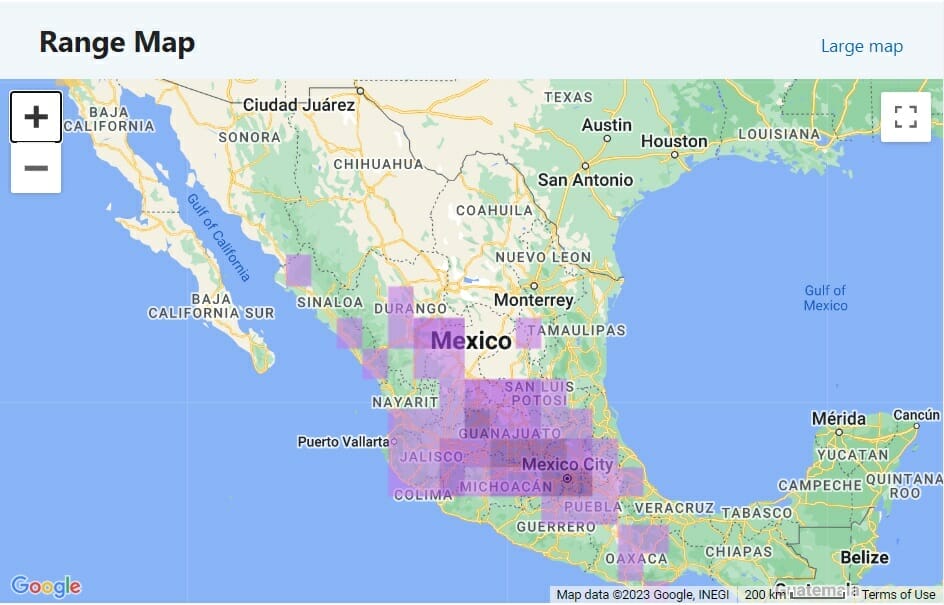
The Black-backed Oriole is resident in central areas of Mexico and possibly migrates a short distance in that area.

Call
Diet
This oriole has a wide ranging diet. It will eat fruits, nectar and insects.
Interesting Fact
The Black-backed Oriole likes altitude. It breeds at levels between 1,500 and 3,000 meters and has been known to go as high as 3,900 meters.
Cinnamon-rumped Seedeater (Sporophila torqueola)
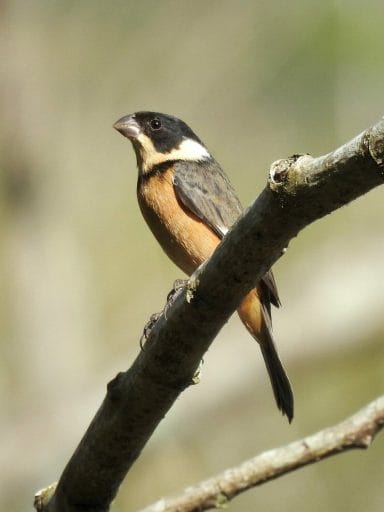
Identification and Size
The female bird is largely buff-colored with a darker back. The male is brighter with a warmer front and black back and head. It has a white collar.
Length: 3.74 – 4.4 inches
Weight: 3.0 – 0.35 ounces
Distribution
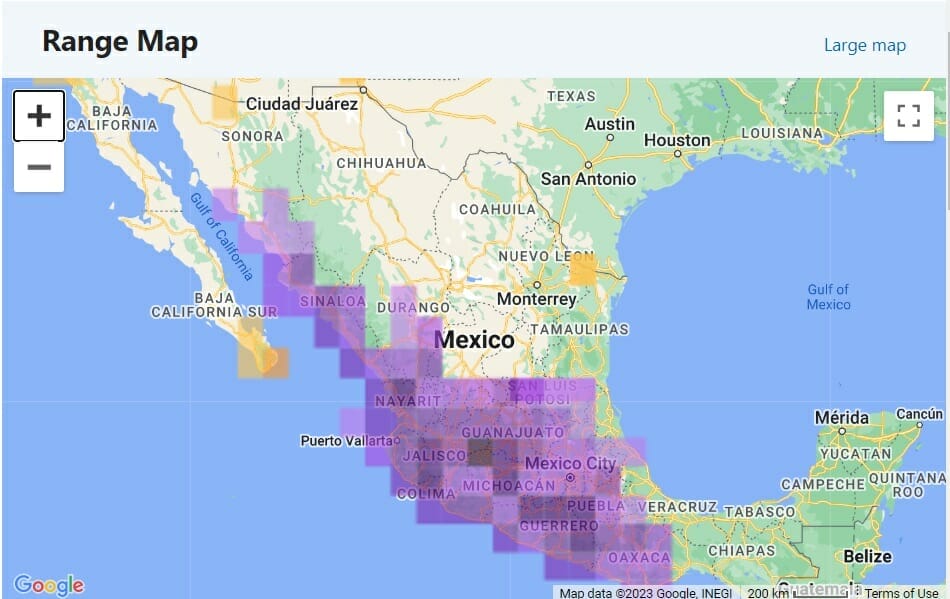
The Cinnamon-rumped Seedeater can be found in the western lowland of Mexico all year round.

Call
Diet
The Cinnamon-rumped Seedeater, as expected, eats mainly seeds, usually from grass. It will take berries and insects occassionally.
Interesting Fact
The Cinnamon-rumped Seedeater sometimes creates large flocks with other birds and other seed-eating species.
Black-headed Grosbeak (Pheucticus melanocephalus)
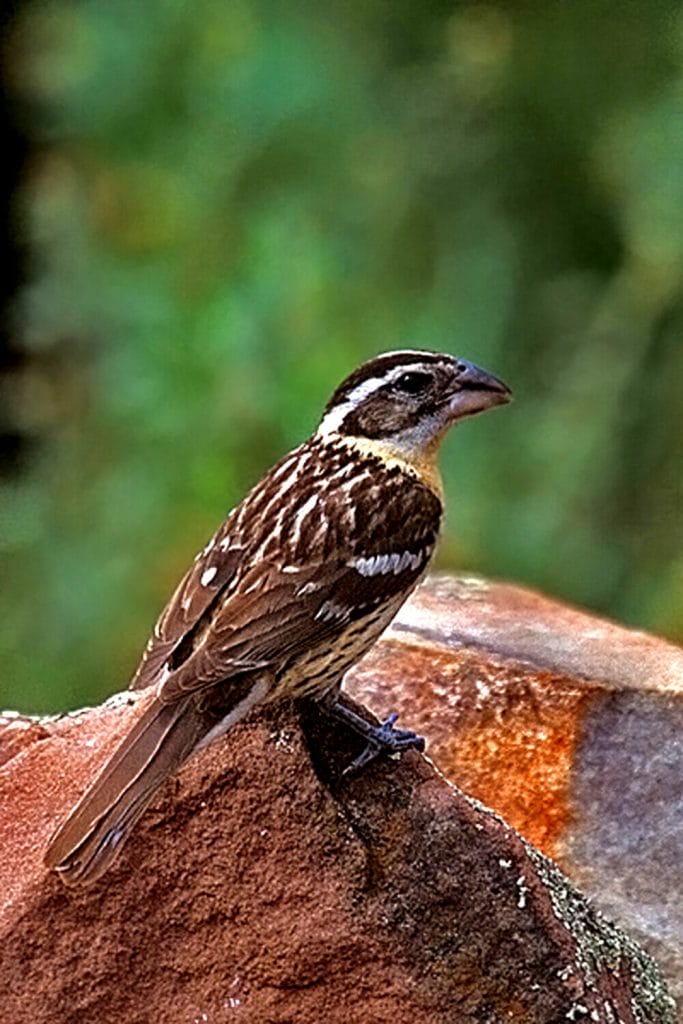
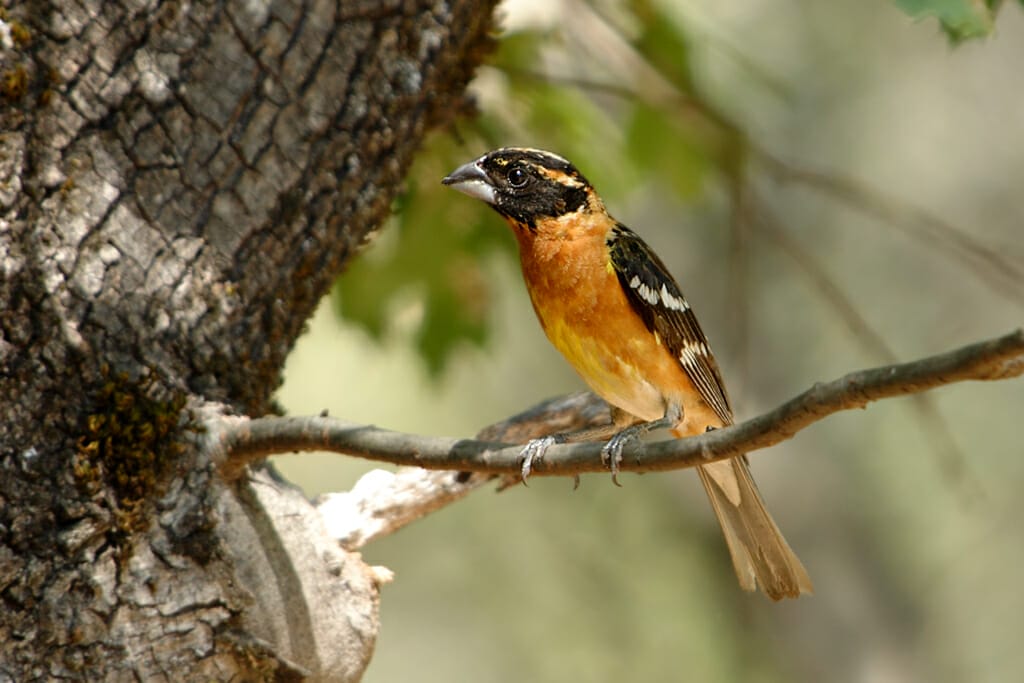
Identification
While the male’s body is largely orange, it is contrasted by the black back with white bars on the wing. The black face blends into an orange neck. The female is more brown, again with an orange breast. Both have a very large, thick bill.
Length: 7.1 – 7.5 inches
Wingspan: 12.6 inches
Weight: 1.2 – 1.7 ounces
Distribution
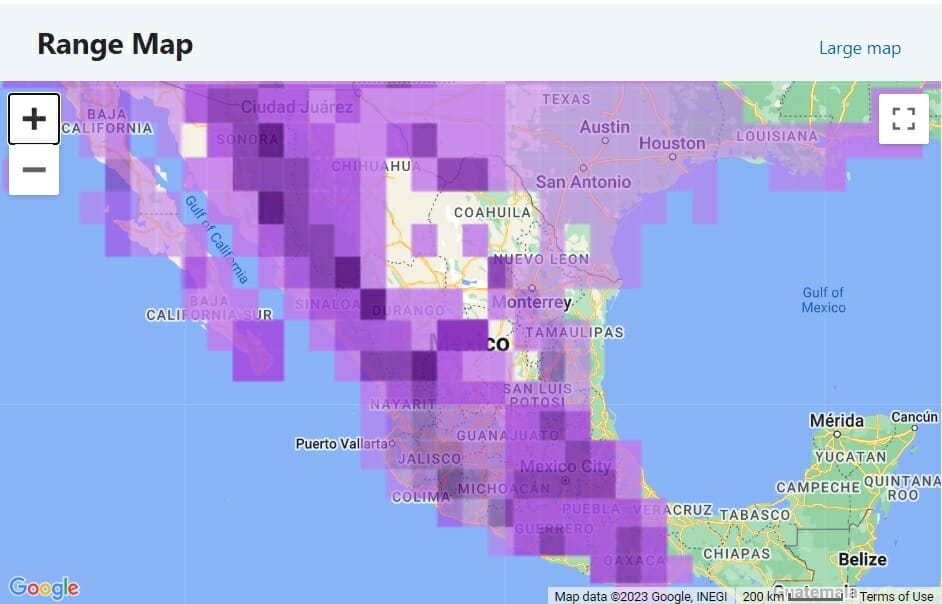
The Black-headed Grosbeak can be seen all year round in Mexico. It is more concentrated on the western side of the country.

Call
Diet
The Black-headed Grosbeak eats a mixture of animals (usually insects and spiders) and plants (fruit and seeds).
Interesting Fact
The Black-headed Grosbeak likes to eat the Monarch butterfly, which is poisonous to most birds. The grosbeak is one of its few predators.
Groove-billed Ani (Crotophaga sulcirostris)
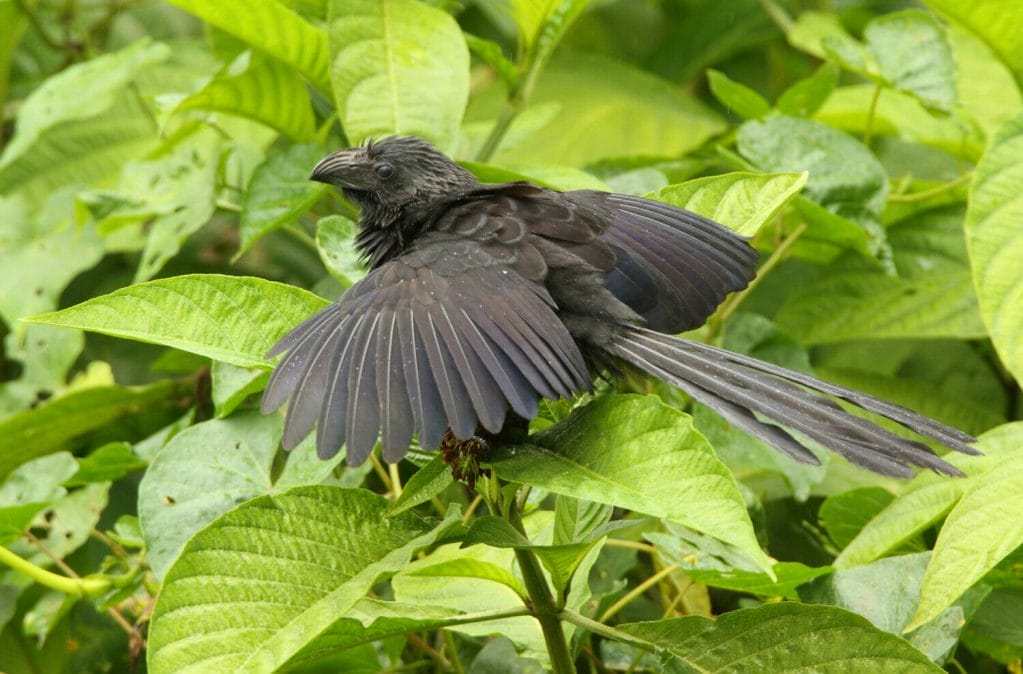
Identification
This is a very odd looking cuckoo with black plumage and large, drooping wings and tail. Its most distinctive feature is the large, narrow bill, which almost looks like it has been squashed. Grooves run down the sides of the bill.
Length: 13.3 inches
Weight: 2.4 – 3.1 ounces
Distribution
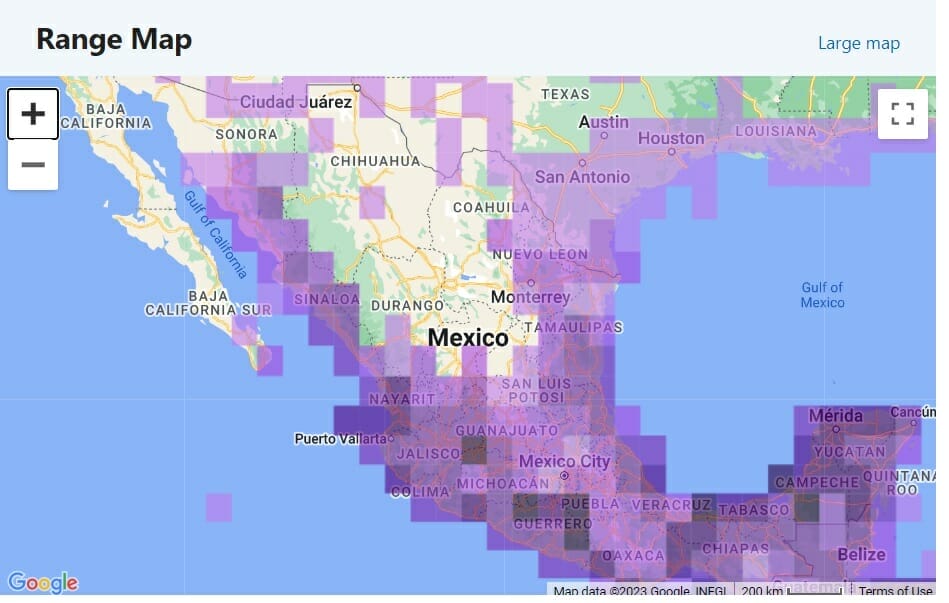
The Groove-billed Ani is resident in its breeding areas and can be found across central and southern Mexico.

Call
Diet
The Groove-billed Ani eats only athropods.
Interesting Fact
Like parrots and woodpeckers, and unlike other members of the cuckoo family, the Groove-billed Ani has 2 toes forward and 2 back.
Great Frigatebird (Fregata minor)

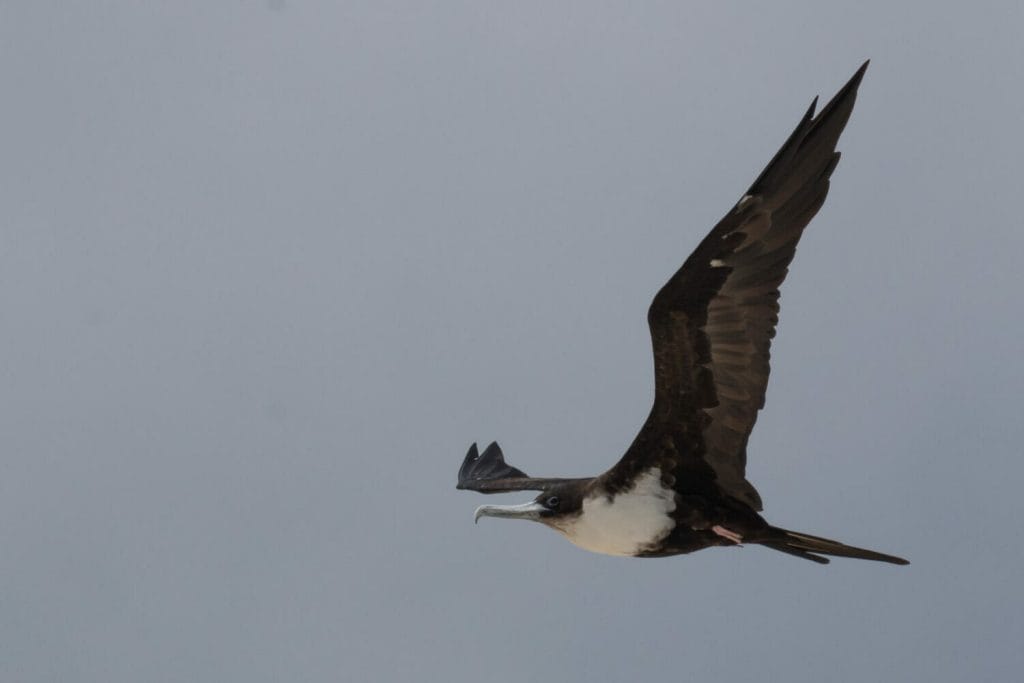
Identification and Size
This is a large bird, usually only seen at see. It has a distinctive point at the top of the wings giving it almost a W shape. The tail is deeply forked but may not be visible. Males have a red pouch at the throat which may be partly visible in flight. The female has a white throat.
Length: 31 – 41 inches
Wingspan: 80 – 91 inches
Weight: 35 – 57 ounces
Distribution
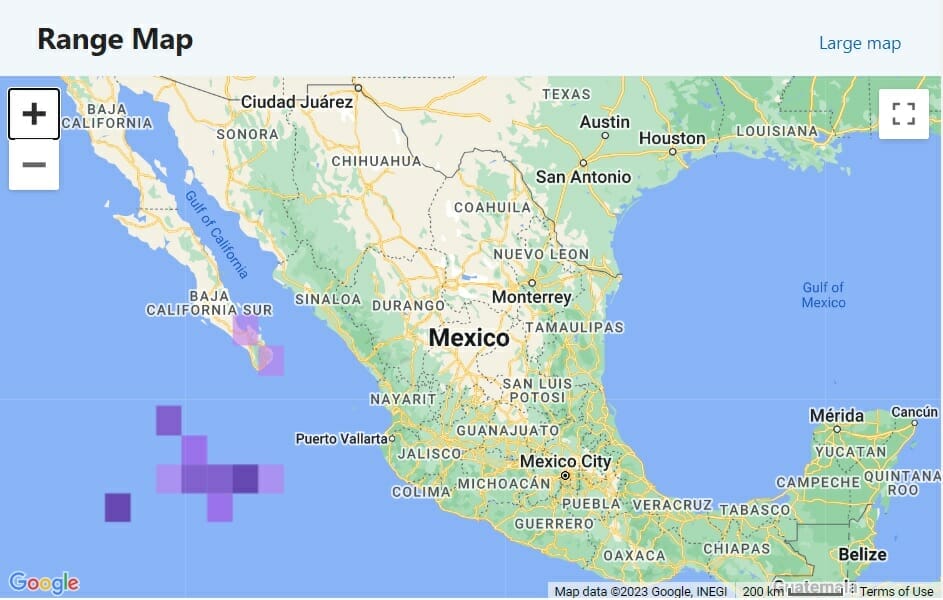
The Great Frigatebird is one of the harder Mexican birds to see as it an offshore bird found, at times, to the west.

Call
Diet
The Great Frigatebird scours the ocean in search of flying fish and squid.
Interesting Fact
This really is a seabird. Rarely landing for anything other than breeding, the Great Frigatebird can soar on thermals for days.
Common Black Hawk (Buteogallus anthracinus)
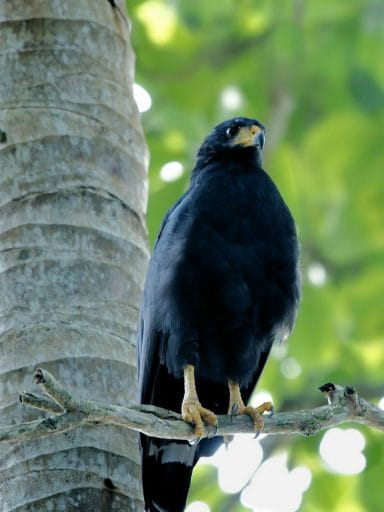
Identification and Size
This hawk is heavy set with a short neck and head. Entirely black except for a white band on the short tail.
Length: 16.9 – 22.1 inches
Wingspan: 46.1 inches
Weight: 27.9 ounces
Distribution
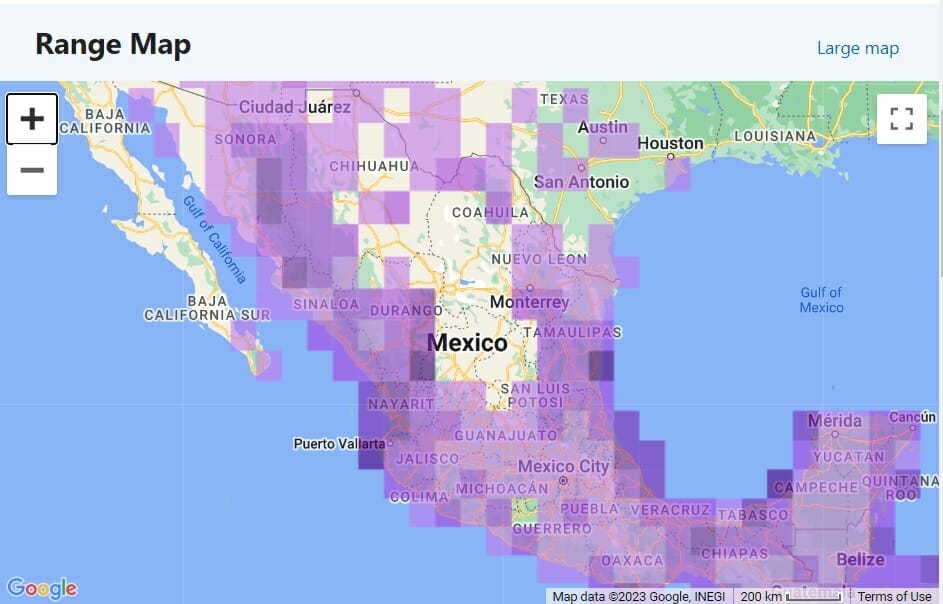
The Common Black Hawk can be seen everywhere in Mexico apart from the north-central desert areas.

Call
Diet
The Common Black Hawk, like other raptors, has a wide ranging diet. It will eat anything from insects, fish, crustaceans, lizards and carrion.
Interesting Fact
This hawk is a great fisher. It will wade into water and then startle the fish by using its wings. It will also herd the fish into an area where they can be more easily caught.
FAQs
The Great-tailed Grackle / Mexican Grackle is widespread, common and very gregarious. It is easily seen and identified.
The Mexican Eagle / Crested Caracara is the national bird. You can find more details about it in our Black Birds in Texas post.
In 2022 a flock of Yellow-headed Blackbirds just fell from the sky. Experts are unsure as to why but it could be that they were alarmed by a nearby predator.
We hope you enjoyed our list of some of the black birds in Mexico. My favorite has to be the Groove-billed Ani. When I saw one, it looked fairly indistinct but the more you get to know about it, the more interesting it is. And that bill …!
